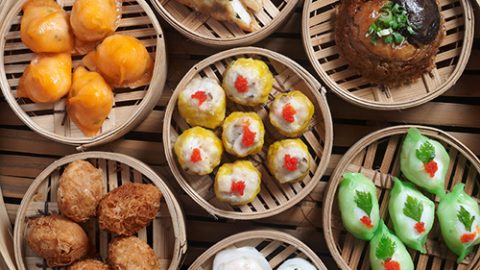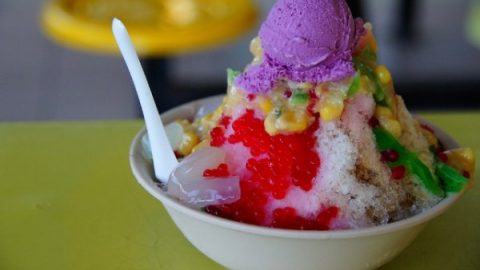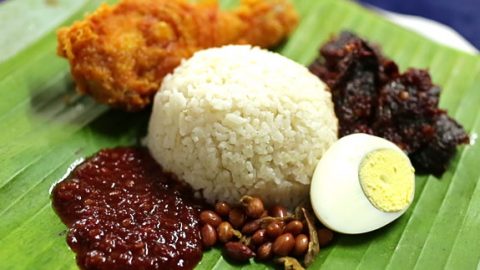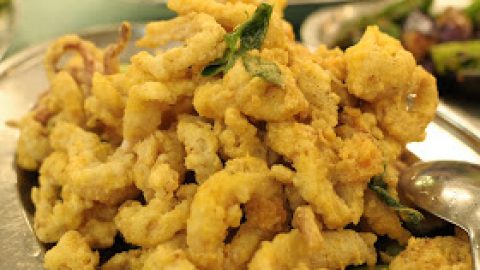If you’ve ever been to Malaysia, you would surely be aware that Malaysia’s food is different. And when I say different, I mean a good kind of different. Like, ridiculously good. But have you ever wondered why the food looks a certain way, or tastes a certain way, or why there’s so much variety? I’ll tell you some history based on my grandmother’s stories about some of them.

A stall selling dried fish at a food market in Malaysia.
If you don’t know it yet, Malaysians love their salted seafood. Malaysia is surrounded by water and it comes as no surprise that the Malay ancestors were mostly fishermen. Without refrigerators, the only way folks back then could keep their catch of the day was by preserving them in all sorts of ways. Some are preserved in paste form to add flavor to broth, some are salted and dried to be eaten as a side dish, some pureed and salted to be fried as crackers, some to be served as sauce. The possibilities are endless. And until now, Malaysians still enjoy all sorts of salted seafood in meals.

What is this food and why does it look like a mini green pyramid?
You mean Nasi Lemak wrapped in banana leaf? If you unfold the green banana leaf you will find; rice cooked in coconut milk, spicy sambal, cucumber, anchovies, ground nuts and a boiled egg. That would be considered a complete and nutritious meal back in the old days for the hard-working paddy field workers. The food is packaged in water-resistant banana leaf so it can be transported by paddy-field workers without the sambal spilling, hence the green pyramid shape. There was no such thing as buying lunch at the nearest stall or plastic containers to store food at that time. Plus, the banana leaves adds a nice aroma and taste to the rice.

And how about this food here that’s wrapped in ribbon-like leaves?
That’s Ketupat, a food that usually makes its appearance during the ‘Hari Raya’ celebrations. Palm leaves are woven to make a pouch and uncooked rice is inserted in the pouch before cooking it in boiling water. When it is cooked, the rice expands and the palm leaf pouch covers the cooked rice, making a pretty decorated packaging for the packed rice. Back then, the Ketupat wasn’t as special as it is today and they had Ketupat year-round, instead of having it just during celebrations. The palm leaves acted as a preservation agent, as a cover to keep the rice from getting dirty and for ease of transportation. The long leaves at the edge of the pouch made it easy for travelers to tie a few Ketupats together and hang it to the travelers belongings.

Why is there such a great variety of food in this country?
One special thing about Malaysia is the variety of food that exists here. A few decades ago, when the British colonized the country, they brought in people from China and India to help in the rubber tapping and tin mining industry. Ever since then, Malaysia has become rich with all kinds of culture and learning new things from one another. A big part of culture is of course, the food. This is exactly the reason why you can find so many different types of delicacies in Malaysia; mostly Chinese, Indian and Western food. We wouldn’t have it any other way.













I will love to try it
Is it true that all food cooked with palm oil ??
No butter or any other oil like corn or sunflower ??
Yes
Does it taste good or just because it’s healthy ?
Both
Looking forward to having a taste of Malaysia food
Looks absolutely delicious! I love seafood and I’m itching my hand just to have a taste of this amazing Malaysian food!
I have been eaten a complete year in the morning. It was delicious.
Let’s eat’em all!!